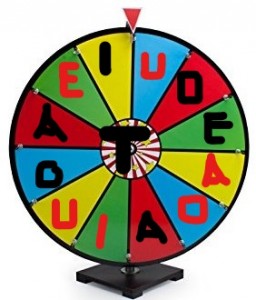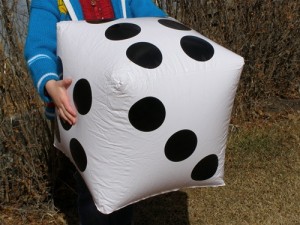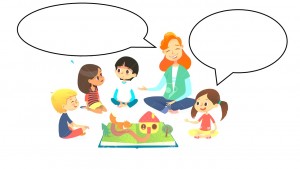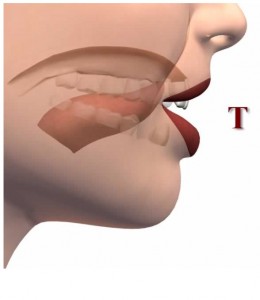
Articulation Therapy: Teaching T and D sounds
Articulation Therapy: Teaching T and D sounds
The sounds /t/ (as in tomato) and /d/ (as in dig) are lingua-alveolar plosives. The name ‘plosives’ comes from the way the sounds expel air when being said. And ‘lingua-alveolar’ is descriptive of the position of the tongue when the sounds are produced. A plan for therapy is drawn out based on the assessment results and thereafter Articulation therapy is undertaken.
When saying each slowly, think about where your lips and tongue are positioned and what they are doing. Also, try to feel where the air from your throat is going while saying each sound.
-
How are the sounds produced?
The sound /t/ is produced by touching the tip of the tongue on the ridge, just behind the upper front teeth – while the lips stay gently apart. Each time the sound is to be produced the tongue quickly touches its position and then is released with a burst of air or ‘explosion’ of air from the mouth.
The sound /d/ is produced with the same position and movement of the tongue, lips, and air, with an addition of voicing (i.e. vibration at the throat level).
-
How is the /t/ sound established?
First, check if the child can lift the tongue. If not, then there is a need to work on tongue strengthening. It may include simple games to learn to raise the tongue. Initially, it will be with the support of a tongue depressor, spoon etc.. Thereafter learning to raise the tongue and remain raised for some time without support. Repeated and regular exercise is needed for the tongue to be raised independently. Get more ideas about this from your speech therapist. (Read about tongue tip elevation in our article)
If the child can raise the tongue, however placement is incorrect during the production of the /t/ sound, then begin by playing these games to Establish it.
1. Taste it.
Place a very small piece of a favorite food item (something gooey in texture) on the ridge, near the palate just behind the upper front teeth. Get the child to use his / her tongue to take it out. This helps a child understand the correct placement. This game does not encourage making sounds but only exploration of correct placement of the tongue.
2. Touch and release.
Show where the child needs to touch the tongue. Once familiar, play a game of pretend. Pretend to be mice or squirrels. Use cut outs of nuts or cheese and pretend to eat them while making the /tatatatata/ sound and action of the tongue. Hide the nuts in different parts of the room and move together. Correct the child for correct placement, when needed.
3. I’m a clock.
Pretend to be a clock with the child and say the /t//t//t/ sound repeatedly as the sound of a clock. Use the hands of a clock and move it as the child makes the sound.
* Note: Before working on producing the sound, listening to and identifying the /t/ from the /d/ sound may be taken up by the speech therapist. Take guidance from your speech therapist about the need for this and how to work on the same.
-
How to work on the sound /d/?
Voicing differentiates the sound /t/ and /d/ (as was the case for /p/ and /b/ sounds). Let the child learn the /t/ sound, thereafter work on voicing. Take tips from the previous article in this series (link is here).
Always keep the learning multisensorial (i.e. use multiple senses together such as those of touch, and hearing). Some children may take more time to learn this skill than others. Be patient and repeat several times, without putting too much pressure on the child.
When the child learns voicing, get him/her to understand to ‘turn on’ voicing for the /d/ sound.
-
How to build the sound at syllable, word, sentence and conversational level.
Achieving the sounds /t/ and /d/ in isolation is the beginning. Hereafter, there is a need to engage the sound in syllables (i.e. the sound along with other a vowel) and several longer utterances.
 In Syllables. Practice the sound with a vowel placed either before or after it. Having a visual by using a syllable wheel is encouraging for the learner. Get the child involved when playing games of saying syllables.
In Syllables. Practice the sound with a vowel placed either before or after it. Having a visual by using a syllable wheel is encouraging for the learner. Get the child involved when playing games of saying syllables.
Play it as a game (e.g. spin the wheel to land on a vowel to say along with the /t/ sound – a variation of wheel of fortune) or say it along taps (e.g. tap a beat on the table or using a xylophone or drum).
In Words. Read about how to build a work list in a previous article here Articulation Therapy: Teaching P and B sounds. Practice a work list through fun.
Here are a couple of game ideas:
-
Walk the bridge
On a page draw out a bridge with planks. Each plank has words (of the sound to be targeted). Each player has a peg. Take turns to say the sound. If said correctly the players peg moves ahead else moves a step back. First one to cross the bridge wins.
-
Connect 4 with a twist
This variation requires the adult/therapist to prepare the discs in advance. Written words are to be stuck on the discs (see the image). The child and adult will take turns playing the game. Each person has one color. They need to take one disc at a time and read the word aloud. If said correctly, they get to place the disc in the connect 4. If the word is said incorrectly, the player must forgo his / her turn. The objective of the game is to be the first to form a horizontal, vertical, or diagonal line of four of one’s own discs.
In Sentences
If the child can use the sounds well within words, then move on to practicing sentences. At first, short sentences should be used – two to three-word sentences. Follow this with longer sentences and paragraphs/stories.
Create a list of sentences with the sounds for the child to practice. For example – (1) Tick tock. (2) The turtle turned away. (3) Tina’s tiger tickled eight cats!
 Make practice fun. Use the sentences to make and play fun games. For instance, a game of ‘Roll the dice’. Form a list of 6 sentences numbered one to six. The adult and the child will take turns to roll a dice. Get a point or sticker for each sentence spoken correctly. Having a fun big dice is wonderful for this game.
Make practice fun. Use the sentences to make and play fun games. For instance, a game of ‘Roll the dice’. Form a list of 6 sentences numbered one to six. The adult and the child will take turns to roll a dice. Get a point or sticker for each sentence spoken correctly. Having a fun big dice is wonderful for this game.
Books are a great way to practice words and sentences. If a child can not read, they can repeat what the parent or therapist read out. The pictures can be encouraging for the child.
A few books available in book stores that can encourage the /t/ and /d/ sounds are – The cat in the hat, Pete the Cat – train trip, Dazzling digger, Harry the dirty dog.
In Conversation.
Using the sounds correctly within a conversation is quite important. This can be worked upon once the child does well in practicing the sounds in sentences and paragraphs. Within a conversation, you would want the child to use the sounds correctly without having a prapred script.
 Daily life conversations must be used mostly. Apart from this, play games wherein the child may have to use conversations. An interactive and creative manner to do this is to use Pictures with Speech Bubbles. You can download scenes from the internet or draw your own in advance. Additionally, you will need to prepare little cards with the target words on them (such as tomato or turtle) which may be somewhat relevant to the scene of the picture. Each person (the adult and the child) will get two cards for themselves, in advance. The game requires each one to fill out conversations for the pictures using the words from the cards. It gets the players to create conversations in a fun way.
Daily life conversations must be used mostly. Apart from this, play games wherein the child may have to use conversations. An interactive and creative manner to do this is to use Pictures with Speech Bubbles. You can download scenes from the internet or draw your own in advance. Additionally, you will need to prepare little cards with the target words on them (such as tomato or turtle) which may be somewhat relevant to the scene of the picture. Each person (the adult and the child) will get two cards for themselves, in advance. The game requires each one to fill out conversations for the pictures using the words from the cards. It gets the players to create conversations in a fun way.
Older children in articulation therapy may engage in drills more often, since it is the fastest and best way to get the child to practice a sound often in a limited amount of time. However, it should not be the largest chunk of the session but maybe a recap at the end of the session or a drill in the mid of the session. Practice of the sounds makes the child better in producing them. However, if the child is making mistakes while using the sound in conversation, then move back to practicing sentences.
***
Please note that these are basic guidelines for articulation therapy. A child’s individual assessment results would guide a speech therapist for specific inputs which may include working on listening to sound and sound pairs or practicing specific sounds before the other (different from above) etc.
***
Subscribe to us to receive our latest articles on articulation therapy ideas!
- What is speech therapy and what Speech Therapist Do? - December 22, 2022
- 5 Simple Ideas to Make Flashcards Fun - June 28, 2018
- Should I use ‘NO’ with my child? - June 24, 2018


Leave a Comment
(1 Comment)